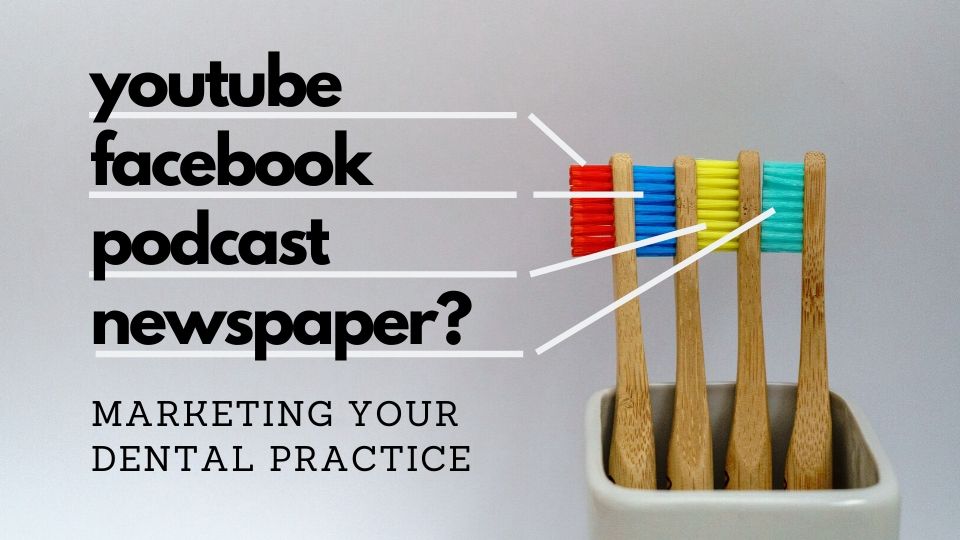
What Should Be in a Great Business Plan – A Financially Simple™ Guide
February 7, 2020
Marketing Your Dental Practice In Turbulent Times
March 25, 2020Dental Practice Closure? Don’t Waste the Time… Do a SWOT Analysis

We are facing unprecedented challenges in the midst of the COVID-19 pandemic. Many states are imposing lockdowns in which all non-essential businesses are closing their doors including your dental practice. You have been ordered to cease operations until further notice. So what good could possibly come of all of this doom and gloom and government-mandated downtime? How about the wholesale improvement of your practice? A perpetual optimist, I try to seek out the silver lining in all situations. That’s why I believe that this is the perfect opportunity to really improve your dental practice by conducting a SWOT analysis. Follow along with me as I explain how to make the most of an otherwise frustrating experience in the life of your practice.
What Is a SWOT Analysis?
If you’ve listened to the Financially Simple podcast for any amount of time, you’ve likely heard me mention a SWOT analysis before. But what is it? SWOT stands for Strengths, Weaknesses, Opportunities, and threats. Ordinarily, this is one of the steps of the strategic planning process but we’re going to use this tool a little differently today. However, a SWOT analysis is nothing more than a time-consuming exercise in futility unless you can put its results to good use.
Identify and Utilize Your Practice’s Strengths to Your Advantage
When conducting your analysis, it’s important to really take an honest and objective look at your practice and make a list for each category. Get your team involved throughout the process. They may be able to give you an informed perspective that you might not see on your own. Begin by making lists for each category. What are three of your practice’s strengths? Do they provide you with any competitive advantages? If you’re unsure of this, take a look at your competitors. List their values and characteristics and then compare them to that of your own practice. Whatever you have that your competitors don’t is a strength – a competitive advantage.
Once you know what your strengths are, you and your team can begin to accentuate them.
Target Your Weaknesses
Nobody wants to admit it but we all have weaknesses or areas where we could improve. The same is true for your practice. Resist the temptation to put on those rose-colored glasses when examining your practice for weaknesses. There is no place for being overly optimistic or pessimistic. What are the areas that your competitors outshine your practice? Maybe they have a better system for onboarding new patients or perhaps, they provide faster service because they have better staffing levels. Whatever it may be, knowing where your practice is lacking is the first step to improving it.
The weak points in your practice will be your targeted objectives for improvement later on.
Be Opportunistic
In some ways, this pandemic, itself, is an opportunity. I mean, that’s kind of the point of this article. Use the time that you’re being forced to take to conduct a SWOT and improve your practice so that it’s better than ever when all of this blows over. However, you probably have opportunities that pertain to more normal circumstances in your business that need to be taken advantage of as well. Put your heads together with your team and identify what your opportunities are. During the mandatory closings are there any additional online trainings your team could take? Are there any inner-office procedures that need a polish (or total rethink)? Once you’ve identified them, plan to use those opportunities to your advantage.
Eliminate Threats
There are a number of threats to your practice that you face each and every day. You carry malpractice insurance to protect you from the threat of legal action if you ever made a mistake when treating a patient. The private practitioner may be threatened by big-box dental offices moving into their neighborhood. The fact of the matter is there are threats to your practice everywhere but you have the ability to mitigate those threats if you can identify them. Consider this area closely and speak to your insurance agent, attorney, and your financial planner to formulate a plan of protection.
What to Do with Your SWOT Findings
As I stated earlier, a SWOT analysis is nothing more than a time-consuming exercise unless you can put its results to good use. You’ve compiled a list of your strengths, weaknesses, opportunities, and threats. Take the information you’ve gleaned and put it into action. Using the basic strategic planning framework, develop objectives to turn your weaknesses into strengths. Whatever it is that your SWOT has unearthed, address it.
If you’re strong in an area, reinforce that strength. Where there are threats, eliminate them. The idea is to do everything you can to make your practice stronger than it was before the coronavirus forced you to “take a break.”
If you would like help in conducting your SWOT analysis or need advice determining which weaknesses or threats, we are here to assist you throughout the process. Schedule a meeting with us today!




